- Home
- entertainment
- news
- All the details you might have missed in Taylor Swift's 'Anti-Hero' music video
All the details you might have missed in Taylor Swift's 'Anti-Hero' music video
Callie Ahlgrim

- Taylor Swift released a new music video on Friday for "Anti-Hero," the lead single from "Midnights."
- "Watch my nightmare scenarios and intrusive thoughts play out in real time," she told fans.
Swift's ghosts represent pieces of her past.
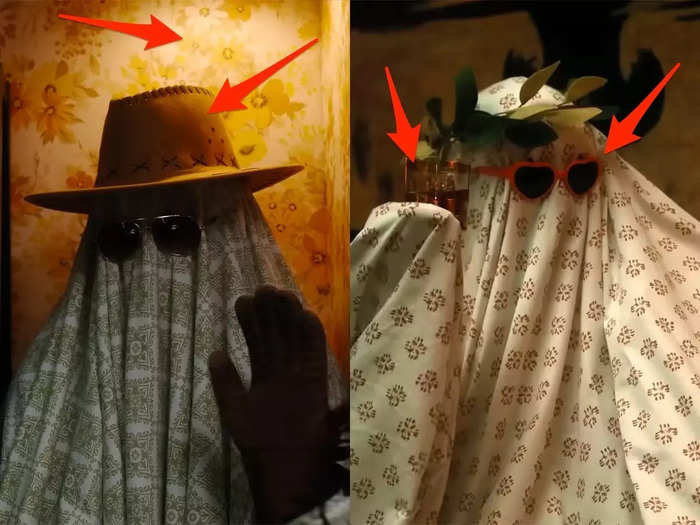
"When my depression works the graveyard shift, all of the people / I've ghosted stand there in the room," Swift sings in the first verse of "Anti-Hero."
In the music video, these people show up in Swift's house as cartoonish ghosts — people with bed sheets draped over their heads — surrounded by tokens from Swift's past.
One ghost dons a cowboy hat, perhaps representing her country-music era or personifying the character she plays in "Cowboy Like Me," the 11th track on "Evermore." He sits in front of wallpaper that's covered in daisies, a likely nod to "Don't Blame Me," the fourth track on "Reputation" ("I once was poison ivy, now I'm your daisy").
Another ghost wears the red heart-shaped sunglasses from the "22" music video while sipping an amber liquid. This could be a reference to "Gorgeous" ("Whiskey on ice, Sunset and Vine") or "Getaway Car" ("I knew it from the first Old Fashioned, we were cursed"), both tracks from "Reputation."
This ghost also wears a leafy wreath around its head, a symbol that's typically associated with Ancient Greece.
In the song's chorus, Swift sings, "I'll stare directly at the sun, but never in the mirror." She seems to make reference to Icarus, a tragic figure in Greek mythology who flew too close to the sun, burnt his wings, and crashed to his death — falling victim to his own ego.
Old-fashioned phones have popped up in music videos throughout Swift's career.
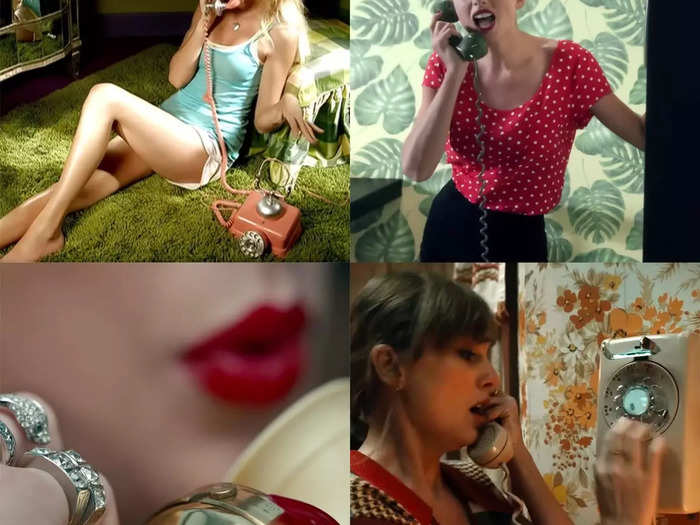
Swift's visual relationship with landlines dates back to "Our Song" in 2007. Another pops up in "We Are Never Ever Getting Back Together" (2012) and then again in "Look What You Made Me Do" (2017).
The rotary phone that appears in "Anti-Hero," however, is more sinister: the line is cut, so Swift can't call for help.
The "problem" version of Swift seems to represent her public persona.
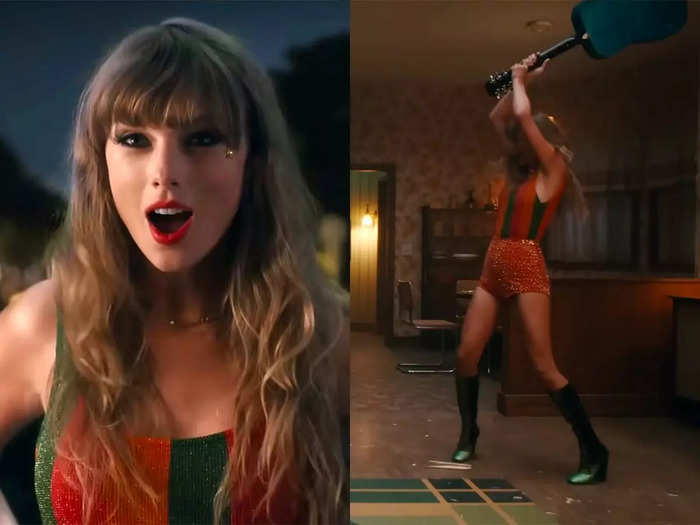
Swift greets a version of herself at the front door, who declares, "I'm the problem, it's me!" She has a tiny star next to her eye, glittery clothes, and snakeskin boots that nod to Swift's "Reputation" aesthetic.
This version more closely resembles the pop star persona that's accessible and visible to the public. She is shown planting harmful thoughts into the real Swift's head, like "Everyone will betray you," and body-shaming her.
Swift has explored this dichotomy before, most notably in the music video for "...Ready For It?"
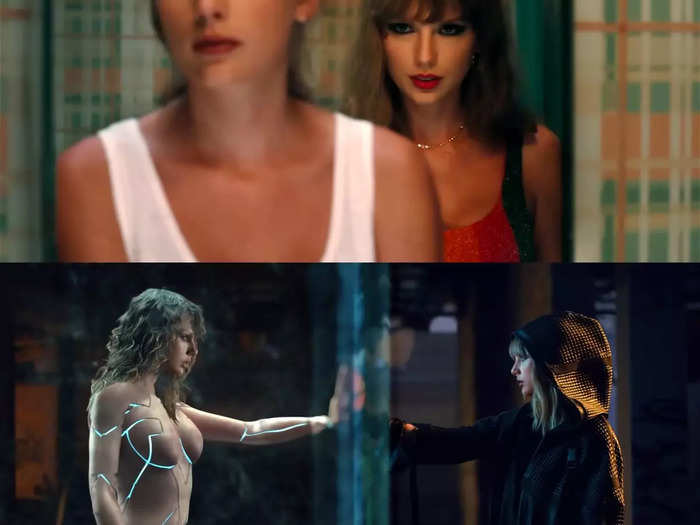
In the "...Ready For It?" music video, the "real" Swift is trapped behind glass, while the "problem" persona who keeps her in captivity (a robot wearing a dark hooded disguise) is the one who roams freely in public.
This scene is probably a reference to "The Archer," the fifth track on "Lover."
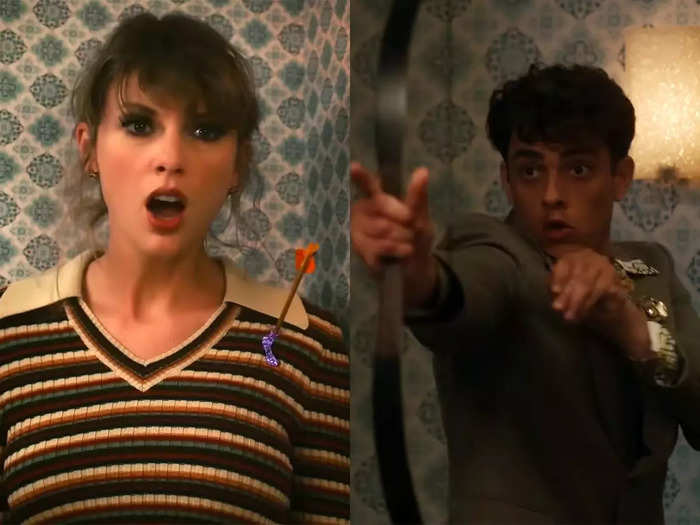
Additionally, Swift's zodiac sign is Sagittarius, which is represented by the archer.
When Swift is shot, her insides are sparkly and purple. This also comes out when she drinks too much.
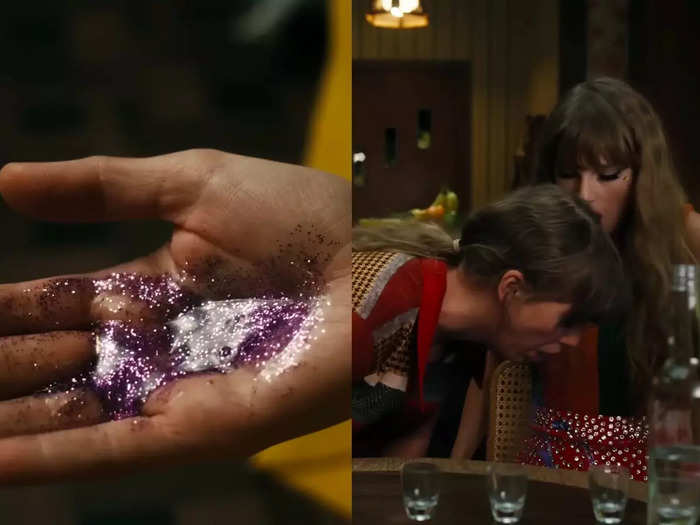
This purple color is likely a reference to "Lavender Haze," the opening track on "Midnights."
Swift seems to suggest that her true inner self only leaks out when she's wounded or her inhibitions are lowered — and when it does, it stains her public persona.
The dining room scene also contains a parallel to "Alice In Wonderland."
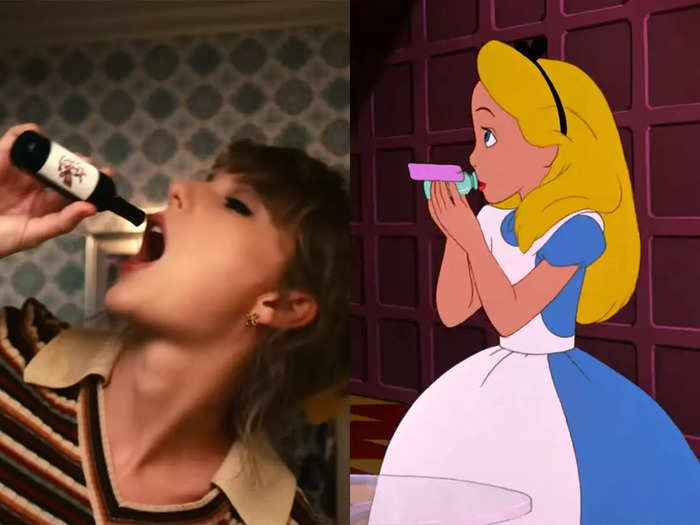
In Disney's 1951 animated film, adapted from the 1865 novel by Lewis Carroll, Alice becomes too large for her surroundings and drinks a potion to make herself smaller.
In Swift's case, however, the bottle is empty.
Swift has referenced "Alice In Wonderland" in the past, most notably in "Wonderland," the 14th track on the deluxe version of "1989."
Swift opened up about her eating disorder in the 2020 documentary "Miss Americana."
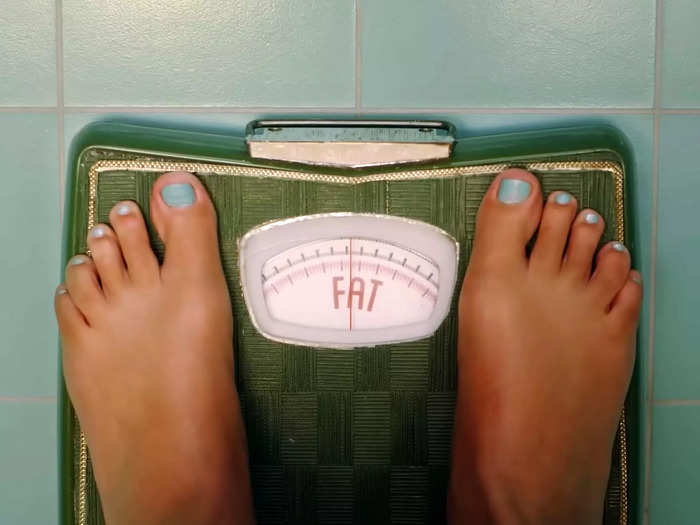
In the "Anti-Hero" music video, Swift steps on a scale that shows her the word "fat."
This could be read as a visual representation of body dysmorphia, a mental health disorder that often causes disordered-eating habits.
Swift disclosed her experience with an eating disorder and ongoing struggle with "impossible" beauty standards in the 2020 documentary "Miss Americana."
"I tend to get triggered by something, whether it's a picture of me where I feel like my tummy looked too big, or someone said that I looked pregnant or something. And that will trigger me to just starve a little bit, just stop eating," she said.
Swift also said she has a healthier relationship with food now than she has in the past, adding: "It's better to think you look fat than to look sick."
A photograph of Swift's late grandma Marjorie can be seen in the background.
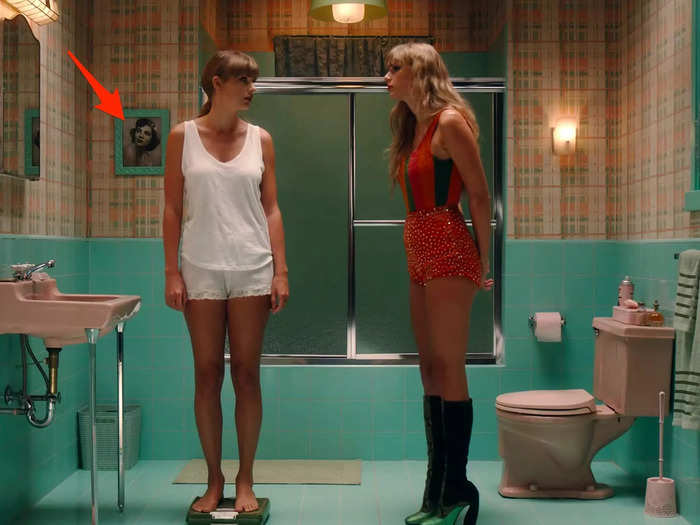
"Marjorie," the 13th track on "Evermore," is an ode to Swift's late grandma who dispensed timeless advice to her granddaughter: "Never be so polite, you forget your power / Never wield such power, you forget to be polite."
In the funeral scene, Swift's will reveals that she left "the majority of my assets" to her three cats.
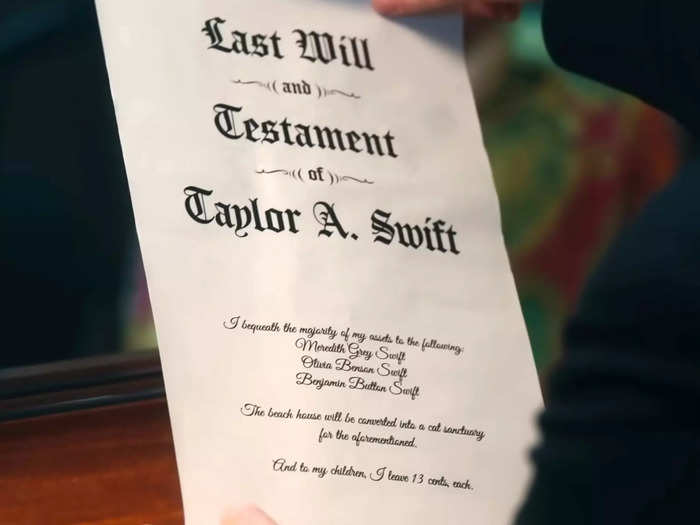
Swift's three real-life cats are named Meredith, Olivia, and Benjamin.
The will also says her three (fictional) children will receive 13 cents each, a cheeky nod to Swift's lucky number.
Two of Swift's greedy future children are played by Mike Birbiglia and Mary Elizabeth Ellis.
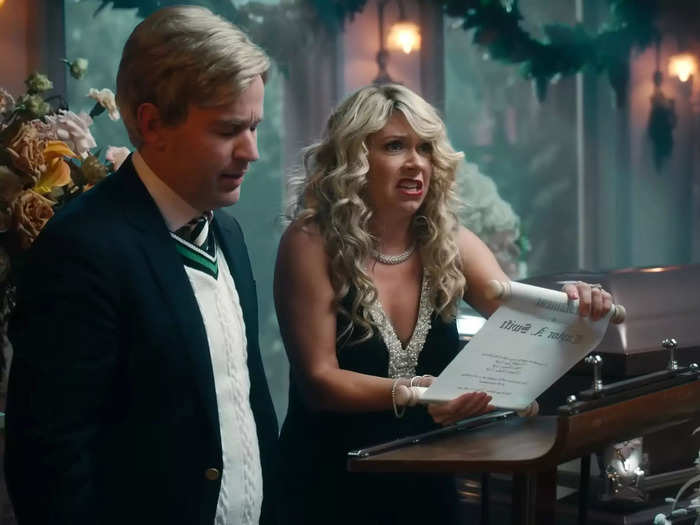
You may recognize Birbiglia from TV shows like "Orange Is the New Black" and "Girls." Ellis is best known for her comedic roles on "It's Always Sunny in Philadelphia" and "New Girl."
Her third child Chad, played by John Early, suggests there's a "secret encoded message that means something else" in Swift's will — poking fun at her Easter egg-hungry fans.
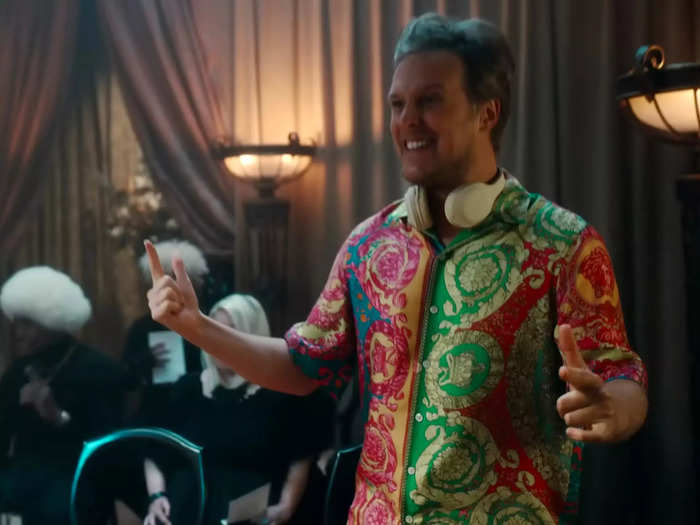
Chad's siblings also accuse him of exploiting Swift for clout, echoing a grievance from "I Did Something Bad," the third track on "Reputation" ("If he drops my name, then I owe him nothing").
Swift watches the scene from her own coffin, recalling a similar visual from the "Cardigan" music video.
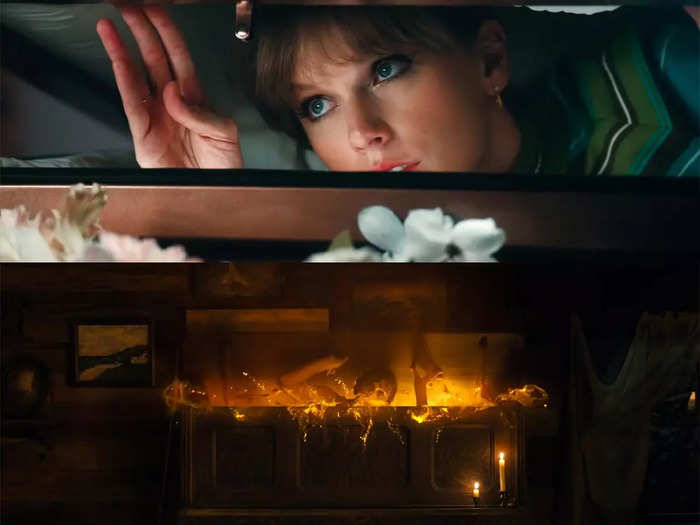
The "Cardigan" music video shows Swift emerging from a piano after nearly drowning in a stormy ocean.
This shot of "monster" Swift walking through the street could be a reference to Lana Del Rey's "Doin Time" music video.

Del Rey is featured on "Snow on the Beach," the track that comes directly after "Anti-Hero" on "Midnights."
Popular Right Now
Popular Keywords
Advertisement